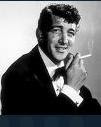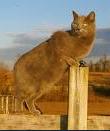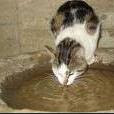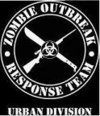Tonight I was having an internet exchange where some of the guys were mocking marching as unimportant and only being about making people "do things", I gave some reasons why an army has to drill, but then I posted these excerpts from an article which I thought gave a quick, but effective mention of the primary reasons for drill and marching. WM
1. The History of Drill:
Drill is marching. In ancient history, the most powerful, efficient and developed empires developed ways of moving organized units of troops from one place to another on the battlefield, without individuals getting mixed up with other units. Otherwise, as masses of people manoeuvred amongst each other individuals would get lost and end up having to attach themselves to any old unit.
A system of flags was developed so people could identify their own units (and side) on the field and make their way their correct flag bearer if they got separated. But sticking to “formed up” squads was better, forming a box of men who moved as a single body. Overall it meant command systems were effective - men stayed together and could be commanded as units.
Josephus, a first century Jewish historian, testifies to the superiority of Roman discipline, and part of that discipline was an ordered method of moving formed up squads from one place to another. This discipline facilitates effective realisation of tactical man-management, and the result is a superior fighting army. [Josephus p195]
2. Drill and Politics:
An army that regularly parades in public displays itself as a highly professional army. Even though the parade itself does not perform any useful function on a battlefield, it has an affect even in times of peace and in build-ups to wars.
A rag-tag army is likely to be unable to put on parades, hence it holds that larger and better armies can display their discipline by means of public performances. It therefore acts as a psychological tool and a deterrent - it says that the army is ready, strong and trained.
3. Drill and Physical Training:
Not everyone has the control over their bodies that athletes have. Strain, stress, laziness, inability, mental weakness and dis familiarity prevent most people from having maximum control of their own bodies. When situations become stressful, cold or uncomfortable then people who have been trained to rigidly form their bodies around their will will undoubtedly perform better than those people whose only mind-body training has been computer games and casual sport.
A recruit will spent an apparent eternity stood motionless at attention, sometimes in seemingly unbearable cold and warmth. But with each such session, the cold becomes a little more bearable, the motionlessness becomes more familiar and more elegant and the recruit’s body learns a little better how to conform completely to the wishes of its operator.
With drill comes increased control over your own body.
In a tactical situation, on sentry, you must remain completely quiet and motionless in order to minimize the chances of being seen or heard. A recruit who has mastered hundreds of hours of drill, in the cold and in uncomfortable positions, will also be a master of his own body in such tactical situations.
When a recruit moves on to skill at arms training the casual motionless and calmness, despite discomfort, is an essential ability of a good shot. If a recruit is not used to ignoring the minor discomforts of a held position, their minds will be distracted and their firing will be less accurate.
Once drill is internalized and your body is accustomed to the discipline, it becomes more like a relaxing meditation than hard work, and your mind can wonder. Retrospectively, it feels to some like they no longer find it hard... it is hard, but, they have become accustomed to the hardness.
“Nearly everyone who came into the Depot from civilian life brought with him the tortuous notion that, to drill smartly, one had to restrict and frustrate the natural action of the body. [Through drill] men came to inhabit and use their bodies less self-consciously, with an economy of movement”William Barlow, 2005
Subscribe to:
Post Comments (Atom)


























































No comments:
Post a Comment